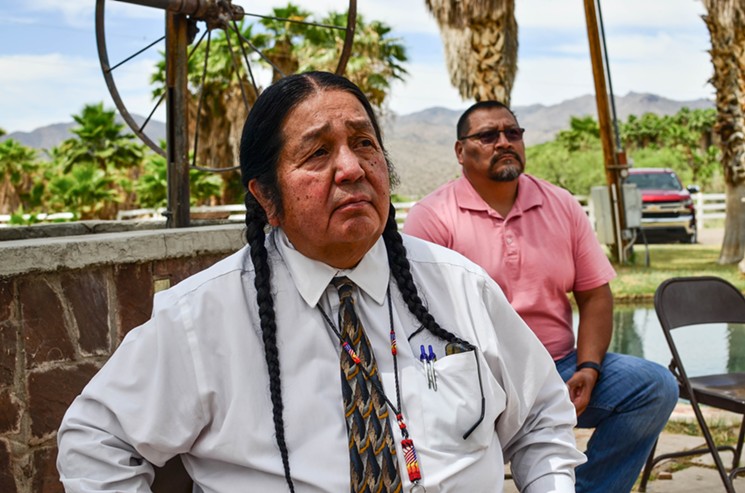This article originally appeared on the Protect Thacker Pass Blog. Featured image: Photo of Damon Clarke, chairman of the Hualapai Tribe by Josh Kelety
Thacker Pass gets a mention in this article in the Phoenix New Times about another proposed lithium mine in Arizona, one that would use the same sulfuric acid leaching process that the Thacker Pass lithium mine would use. It’s also yet another mine threatening the water and land of indigenous people.
“The brewing tension surrounding the project in Wikieup represents a broader fight over lithium mining that is taking place in other states. Increasing use of electric cars and renewable energy has caused demand for lithium to soar, with projections for even more needed in the near future. But some observers are raising red flags, like in Wikieup, about the potential harmful environmental impacts of lithium mines.”
In this case the mining company is Hawkstone Mining, another foreign mining company (Australian, like Jindalee, the mining company that wants to mine lithium just across the OR border from Thacker Pass).
As members of the Hualapai Tribe noted, the mining would disturb their cultural sites (just like the Thacker Pass mine would disturb the cultural sites of the Paiute Shoshone people), and could use up or contaminate ground water in a state in the middle of extraordinary drought.
“There is no water in the state of Arizona. Everyone is fighting for water. Here, in this area, it’s arid and there’s not a lot of water. Whatever water there is here has already been taken by farming and ranching. To allow a big industry to come in that’s going to use tons of water and ruin our water system … then it’s a big problem. This place can’t support something that uses a lot of water, whether it’s lithium or not. We’re all in support of changing our consumption of fossil fuels. But at the cost of the environment just to get that for more cellphones and whatever else, it’s a problem.” — Hualapai Tribe Councilmember Richard Powskey
Peehee mm’huh / Thacker Pass is a special, unique and wonderful place. AND our effort at Thacker Pass is representative of a growing struggle throughout the American West as mining companies ramp up to meet projected lithium demand for EV batteries and energy storage and an ever-increasing number of devices.
As we said when we began this fight: this is just the beginning. We take a stand at Peehee mm’huh for all the land and water that may otherwise be stolen for lithium for cars and gadgets and technology that we do not “need” to live well on this beautiful Earth.
Join us to #ProtectThackerPass and all the other lands under threat from mining.
For more on the Protect Thacker Pass campaign
